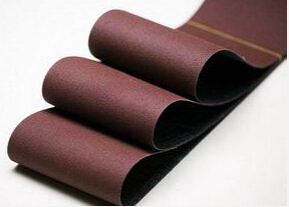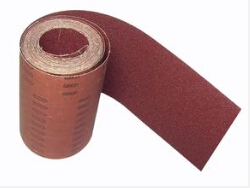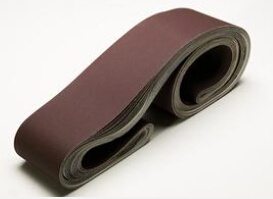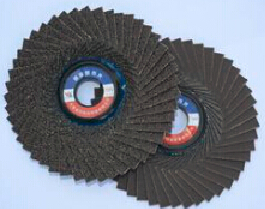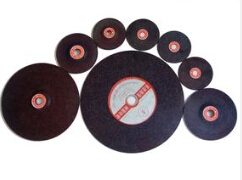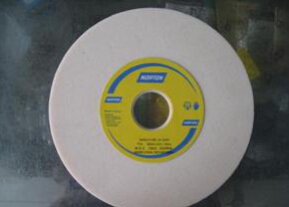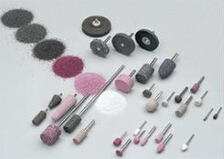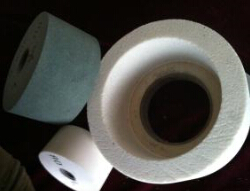Various Abrasive Materials Introduction
Zhongsen Editor 2016-06-28Abrasive
Definition
Abrasive is a kind of sharp, hard materials, used for the surface grinding of soft materials. Abrasive are divided into natural abrasive and artificial abrasive. According to the classification of hardness, abrasive can be divided into super abrasive and ordinary abrasive. The range of abrasive is very wide. From household detergent, gem diamond abrasive to the most hard materials, abrasive is essential for every kind of precision products. Many natural abrasive has been replaced by artificial abrasive.
Classification
Diamond
Diamond with extremely high hardness, sharp particle appearance, has good grinding effect for different hardness of the material. In addition, diamond polishing abrasive can be used for a long time with high cutting ability, and therefore the consumption is less than other abrasives, at the same time it can also reduce the deformation layer in sample surface.
Alumina
Alumina with high hardness, and do not react with the polishing material generally. Alumina polishing abrasive is general polishing abrasive for steel sample. But it should not be used for polishing aluminum and aluminum alloy, because the aluminum oxide could produce corrosion pit in aluminum surface.
Chrome Oxide
Polishing ability of Chrome Oxide is weaker than alumina, can be used for final polishing of steel sample.
Iron oxide
Iron Oxide can achieve extremely shining surface, but also easy to produce deformation layer. It will drag out non-metallic inclusions from sample metal substrate.
Magnesia
Magnesia with low hardness and very fine particle, has a sharp appearance and good grinding blade. It is suitable for final polishing of aluminum, magnesium, and other non-ferrous metal and alloy samples.
Glass beads
Glass bead is abrasive with unique characteristics. It is widely used for cleaning or metal surface strengthening treatment .It is mainly used for sand blasting equipment. Glass beads made from high quality glass crushed sorting.
Walnut Sand
Walnut Shell is crushed into grits used for cleaning and polishing of mould, instrument, electrical, plastic, gold and silver jewelry, metal, glass, glasses, watches, golf clubs, hairpins and buttons. It is mainly used for blast cleaning industry, such as paint, rust, chemical materials.
Nylon sand
Nylon sand is soft with toughness. It will not damage the product in use process. And the service life of the Nylon sand is very long. It is mainly used for sand blasting and shot blasting equipment.
Resin sand
The industrial applications of resin sand jet including coating removal, coating removal and surface cleaning and adjustment. This technology also can be used for removing flash, burrs; cleaning mold, the sensitive element and gilded parts in electronic products, thermosetting plastic products and rubber products. It can be used as a paint remover, adhesives, strengthening agent, waterproofing agent, flame retardant, etc. Resin sand is widely used in various fields
Ceramic sand
Ceramic sand has the very good strength and toughness. It has a particularly high hardness and smooth surface, can be used repeatedly. The high utilization rate of Ceramic sand is 15 to 20 times that glass beads. The particle size range is wide, can match with various types of sandblasting machine.
Steel shot
Steel shot is a kind of commonly metal workpiece processing material. Dealing with the surface of metal workpiece with steel shot can have the effect of adding metal workpiece surface pressure and improving the anti-fatigue ability.
Fused Mineral Abrasives
Fused Mineral Abrasives are mainly divided into two major categories of alumina and silicon carbide abrasive, specifically, have the following kinds:
Brown Fused Alumina
Brown Fused Alumina, main component is Al2O3, with medium hardness, great toughness and low price. It is suitable for processing the high tensile strength metal. Microcrystalline alumina and black fused alumina abrasives are derived varieties. Brown fused alumina called “teeth of industry” and mainly be used in refractory materials, grinding wheel, sand blasting.
White Fused Alumina
White Fused Alumina is a kind of artificial abrasive. Al2O3 content over 99%, and containing a small amount of ferric oxide, silicon oxide, the color is white. Its hardness is slightly higher than that of brown fused alumina, but the toughness is poorer. When grinding, it is easily to cut into the workpiece. White Fused Alumina has good self-sharpening, lower calorific value, good grinding ability and high efficiency. Pink corundum is its derived varieties.
Monocrystalline Fused Alumina
Monocrystalline Fused Alumina, the grain is composed of single crystal, and has good multiple cutting edge, high hardness, strong grinding capacity, less calorific value. The disadvantage is that the production cost is higher, yield is low, so the price is quite high. Zirconium corundum is crystalline compound too, the hardness is slightly lower, crystal size is fine, wear-resisting performance is good.
Silicon Carbide (SiC)
Silicon carbide includes Green silicon carbide and black silicon carbide as two commonly used varieties. (1) black silicon carbide containing SiC about 98.5%, its toughness is higher than the green silicon carbide, mostly used for processing low tensile strength material, such as glass, ceramics, stone, refractory material, cast iron and nonferrous metal, etc. (2) the green silicon carbide containing SiC99 % above, with good self-sharpening, mostly used for processing hard alloy, titanium alloy and optical glass, also used for honing cylinder jacket and fine grinding HSS cutting tools.
Natural abrasive
Abrasive made of natural ore direct granulating, mainly including quartz sand, garnet, natural corundum, diamond and so on.
Quartz sand
Quartz sand is the quartz grain with writing processing. Quartz is a kind of non-metallic minerals, is a hard, wear-resisting silicate mineral with stable chemical performance. The main mineral composition is SiO2. Color of quartz sand is the milky white or colorless translucent, Mosh hardness 7. Quartz sand is important industrial mineral materials, non hazardous chemicals, widely used in glass, foundry, ceramic and fireproof material, smelting ferrosilicon, metallurgical flux, metallurgy, construction, chemical, plastic, rubber, abrasive, filter material and other industries.
Garnet
Garnet is a kind of good abrasive. It is commonly used as a substitute for Sandblasting (Sandblasting) in the silica sand.After mixed with high pressure water, garnet is used for cutting steel and other materials in Water jet cutting.Garnet is also used for water purification.
Diamond
Diamond is a kind of mineral composed of carbon element, is the allotropes of carbon element. Diamond is the hardest substance in natural existence on earth. Diamond has a very wide range of use, such as handicrafts, cutting tools in the industry.
Super abrasive
With its excellent grinding performance, Super abrasives has been widely used in grinding technology, and become the basic of improving in super precision grinding, high efficiency grinding, precision grinding, difficult-to-machine materials forming grinding, grinding automation and unmanned technology. Due to their complementary in processing materials, the use of Diamond and CBN abrasive covering a variety of high hard, brittle, almost all of high-strength ductile materials processed materials.
Features
One of the important performance of abrasive is hardness, it must be harder than materials for processing, people commonly use mosh hardness meter to determine various abrasive hardness. Another important performance of abrasive is strength toughness or volume. To control this performance, people can change the amount of mixing materials, such as purity, particle size and crystal structure, then make the abrasive suitable for various applications.
Abrasive products manufacturing, in addition to the powder talc and iron oxide, all the raw material should be crushed and screened, screening particle size should be 4 to 900, namely about 6 mm (millimeter) to 6 microns or more finer. Grinding wheel is a kind of main abrasive products. Abrasive cloth and sand paper are another two kinds of large output abrasive products. Other powder or granular abrasives, after screening, should be processed, such as abrasives for grinding or polishing, usually be added mineral oil or wax and other accessories, to adapt to the needs of different working conditions.
Physical Properties
Abrasive grain
Abrasive grain refers to the abrasive particle size. According to its particle size, the size of the abrasive can be divided into grinding grain, abrasive powder, micro powder and ultra-fine powder. Among them, abrasive particle size number of grinding grain and abrasive powder is denoted by the number of mesh on every inch of the screen, the symbol is #. Such as 240 #, it is to point to every inch screen length with 240 holes. And abrasive particle size number of micro powder and of ultra-fine powder is represented by the actual size particles, the logo is "W". Sometimes it can be converted into the mesh. W20, for example, is the actual size of said abrasive particles between 20 microns ~ 14 microns, and the mesh number is # 500.
Abrasive hardness
Abrasive hardness refers to the ability of abrasive surface to fight outside effect. Hardness of abrasive (such as oil stone) is adhesive bonding degree of solid abrasive when affected by external force, it is one of the basic features of abrasive. Grinding processing is the use of hardness difference between abrasive and grind workpiece.
Abrasive strength
The strength of the abrasive refers to the degree of solid. It is the ability of withstanding the applied pressure without being broken when grinding grain of the blade is quite sharp. With low strength, abrasive has low cutting ability and short service life. This requires grinding grain should have the high hardness and sufficient strength, so that can do grinding processing better.

